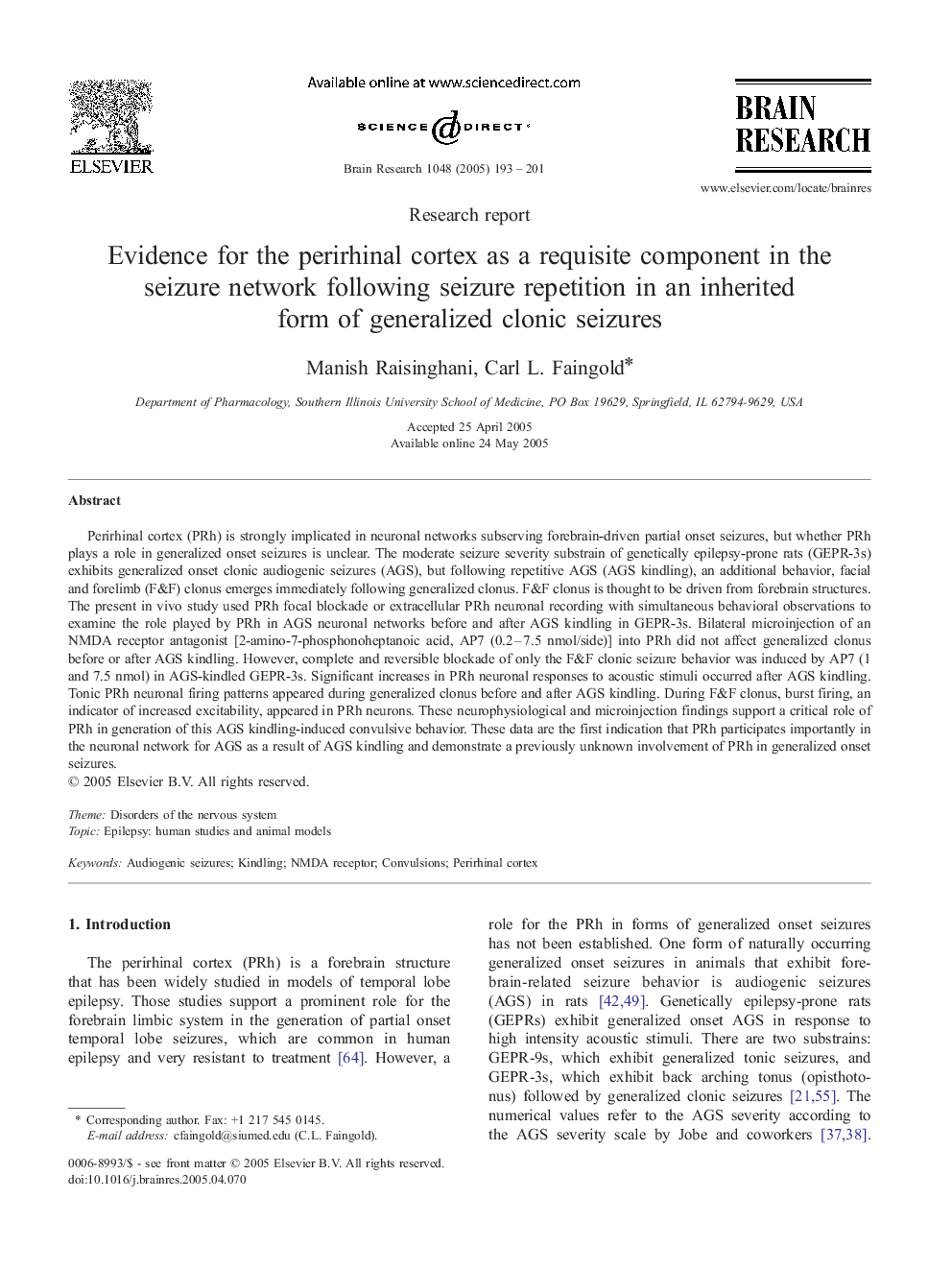| Article ID | Journal | Published Year | Pages | File Type |
|---|---|---|---|---|
| 9416215 | Brain Research | 2005 | 9 Pages |
Abstract
Perirhinal cortex (PRh) is strongly implicated in neuronal networks subserving forebrain-driven partial onset seizures, but whether PRh plays a role in generalized onset seizures is unclear. The moderate seizure severity substrain of genetically epilepsy-prone rats (GEPR-3s) exhibits generalized onset clonic audiogenic seizures (AGS), but following repetitive AGS (AGS kindling), an additional behavior, facial and forelimb (F&F) clonus emerges immediately following generalized clonus. F&F clonus is thought to be driven from forebrain structures. The present in vivo study used PRh focal blockade or extracellular PRh neuronal recording with simultaneous behavioral observations to examine the role played by PRh in AGS neuronal networks before and after AGS kindling in GEPR-3s. Bilateral microinjection of an NMDA receptor antagonist [2-amino-7-phosphonoheptanoic acid, AP7 (0.2-7.5 nmol/side)] into PRh did not affect generalized clonus before or after AGS kindling. However, complete and reversible blockade of only the F&F clonic seizure behavior was induced by AP7 (1 and 7.5 nmol) in AGS-kindled GEPR-3s. Significant increases in PRh neuronal responses to acoustic stimuli occurred after AGS kindling. Tonic PRh neuronal firing patterns appeared during generalized clonus before and after AGS kindling. During F&F clonus, burst firing, an indicator of increased excitability, appeared in PRh neurons. These neurophysiological and microinjection findings support a critical role of PRh in generation of this AGS kindling-induced convulsive behavior. These data are the first indication that PRh participates importantly in the neuronal network for AGS as a result of AGS kindling and demonstrate a previously unknown involvement of PRh in generalized onset seizures.
Keywords
Related Topics
Life Sciences
Neuroscience
Neuroscience (General)
Authors
Manish Raisinghani, Carl L. Faingold,
